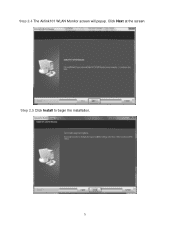

# network, the authoritative directive should be uncommented. # If this DHCP server is the official DHCP server for the local Option domain-name-servers, Īnd change them to add a # in the beginning so they say Next we will edit /etc/dhcp/nf, a file that sets up our DHCP server - this allows wifi connections to automatically get IP addresses, DNS, etc. You'll get two 'config' screens, say Yes to both Repositories) (text above shows udhcpd but that doesnt work as well as isc-dhcp-server, still, the output should look similar) Also install a nice iptables manager with (You may need to sudo apt-get update if the Pi can't seem to get to the apt-get Sudo apt-get install hostapd isc-dhcp-server You need internet access for this step so make sure that Ethernet connection is up! Next up we install the software onto the Pi that will act as the 'hostap' (host access point). When it comes back up check with ifconfig -a that you see wlan0 - the WiFi module. Author Brendan Horan then gets you started on a series of fun and practical projects, including a simple temperature sensor, a media center, a real-time clock, and even a security monitoring device, all of which require minimal programming. If you have a Pi 3, or any other Pi with built in WiFi, an external WiFi adapter is not required but you can use one if you need a bigger/external antenna. Practical Raspberry Pi takes you quickly through the hardware and software basics of the Raspberry Pi. runsudo shutdown -h now and then plug in the WiFi module when the Pi is off so you don't cause a power surge. You will also want to set up your WiFi dongle. Save the touch parameters (may differ depending on LCD) to 99-calibration.Check Ethernet & Wifi Before continuing make sure the Ethernet cable is connected in and you can ping out from the Pi:.You can create a nf file to save the touch parameters (not necessary if file exists).Maybe rebooting is required to make calibration active. Finish the touch calibration following the prompts.Click the Men button on the task bar, choose Preference -> Calibrate Touchscreen.Sudo dpkg -i -B xinput-calibrator_0.7.5-1_b This LCD can be calibrated using a program called xinput_calibrator.If you don't know how to do that,you can refer to the Raspberry Pi office tutorial Step 3: Open terminal and Download the driver on RPI Tips:Basic for Raspbian Jessie with PIXEL (-raspbian-jessie.img) Or you can also burn the configured system image directly. When users connect the Raspberry Pi to use, they need to configure the official system. Powered not only from your computer, but also from your portable power.




 0 kommentar(er)
0 kommentar(er)
